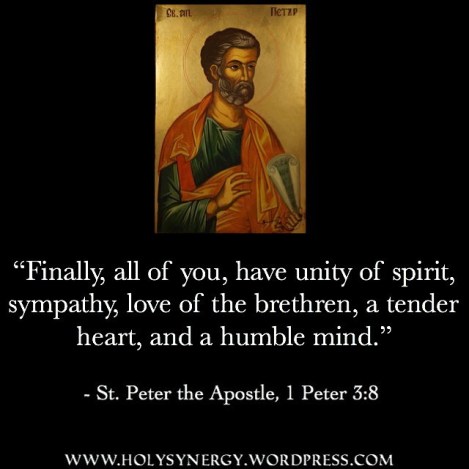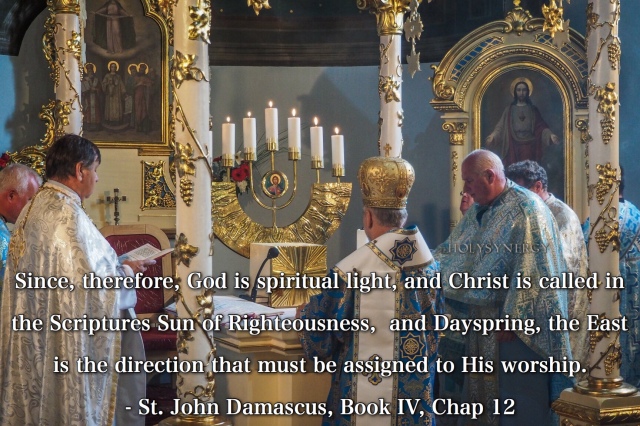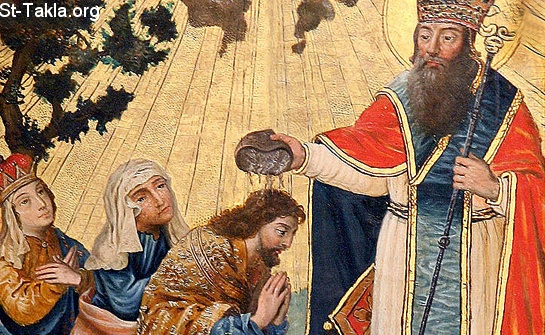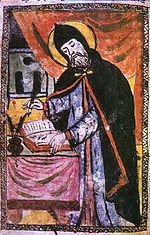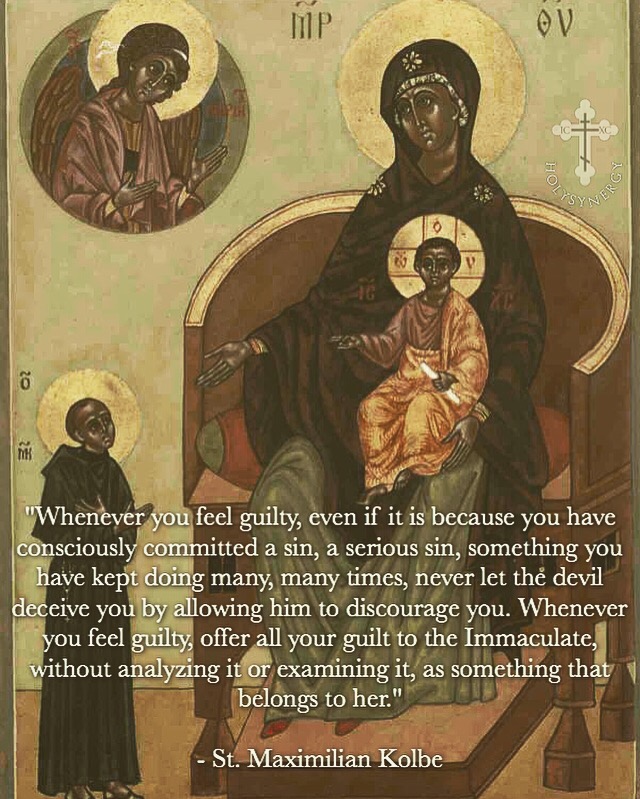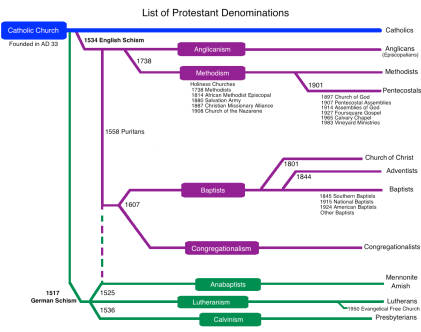“For Faith is the beginning and the end is love, and God is the two of them brought into unity. After these comes whatever else makes up a Christian gentleman.” –St. Ignatius of Antioch
A close friend and brother of our blog has recently asked us if there were any converts to the Catholic Church from the Russian Orthodox Church. After taking a look at history, we have found a significant amount of converts. That being said, we can only name a few because of the high percentage of converts to the Catholic Church from the Russian Orthodox Church. Considering that one of our admins are Russian Catholic, we would like to dedicate this post to him. Let’s take a look at the inspiring souls that have even risked being persecuted for the Church because of their conversion.
1. Vladimir Vladimirovich Abrikosov
Vladimir Abrikosov, following his wife a year later, converted to the Catholic Church in 1909 after leaving the Russian Orthodox Church. On May 29th of 1917, Vladimir Abrikosov had taken part in the council of the Russian Greek Catholic Church and was ordained a priest of the Church in the Byzantine Rite by Metropolitan Andrey Sheptytsky of the Ukrainian Greek Catholic Church.
Following his ordination, he was appointed as the rector of the local Moscow Greek Catholic parish and the head of the Dominicans within the area. In 1920 – 1922, Father Abrikosov has held a meeting in which has taken place between both Catholic and Russian Orthodox representatives within his home.
By the grace of God and the influence of Father Vladimir, he has converted former Russian Orthodox Dmitriy Vladimirovich Kuz’min-Karavaev to the Catholic Church, causing Father Vladimir to be arrested and threatened with a sentence to death by the Russian government due to it being “counter revolutionary” on the 17th of August, 1922.
After the punishment has been examined by the government officials, it was later terminated and Father Vladimir was instead sentenced with perpetual exile, causing him to be expelled from Russia, his native land. Even though he was expelled from the land of Russia, he has built contacts with Russian Catholic officials within Rome due to the persecution of Greek Catholics within the Soviet Union. In the name year, Father Vladimir has obtained an audience within the presence of His Holiness Pope Pius XI to discuss the situation of the Russian Catholic Church in regards to its persecution.
Later, Father Vladimir was recognized as an official member of the Congregation for Eastern Churches and procurator of the Russian Exarchate. However, he was unfortunately slandered by a Russian officer, that being Baron Igor von der Launitz, in whom was hostile towards Roman Catholic Bishop Michel d’Herbigny.
After Launitz’s extradition from Italy, Abrikosov continued his work to abolish the Russian Exarchate when he left Rome to establish himself in Paris. from the contacts with Russian immigrants, Abrikosov remained in solitude. He died on 22 July 1966.
2. Igor Akulov
Ignor Akulov was born to a family of Russian orthodox peasant farmers in the year of 1897 on April 13th. He graduated from a technical high school and later became a telephone clerk at the Moscow Saint Petersburg’s Railway. During the Russian Civil War, he served the Red Army as a non combative soldier. On July 2, 1921 he was tonsured as a Russian orthodox monk with the name of Brother Epiphany. After meeting with Exarch Leonid Fyodorov, and under his influence Brother Epiphany Akulov began attending Eastern Rite Catholic Liturgies, and in the summer of 1922 was received into the Russian Catholic Church. In 1921, he was ordained as an Eastern Catholic priest by Archbishop Jan Cieplak. After August 1922 he was the Pastor of the Byzantine Catholic Church of the Descent of the Holy Ghost in Petrograd.
After the closings of the Catholic Churches within his area, he secretly served the church in his apartment. On November 23, he was arrested along with other priests, however, not within the same area. He was accused of the Catholic counter-revolutionary organization. 19 May 1924 was sentenced to 10 years in prison, was in political prison near the Irkutsk. In 1927 released early and sent into exile. In 1933 he was freed from exile, he served in various churches in St. Petersburg. Akulov was a good preacher, preached in Russian.
In 1935, he was again arrested for a short time. On the 26th July, 1937 he was arrested, sentenced to death on August 25, 1937, and was later executed on August 27. He was buried at Levashovo Mass Grave in St. Petersburg.
3. Nikolai Alexandrov
Nikolai Alexandrov was born in 1884 in Moscow. He graduated from the Moscow Technical School as an engineer-technologist. From 1912 he worked in Germany as an engineer in the company of Siemens-Schuckert. While in Germany Alexandrov converted to Catholicism from Russian Orthodoxy, his religion by birth.
Since July 1913, after his return to Moscow he worked in city government, with the 1914 charge tramway workshops, with 1917 worked as an engineer. Nikolai Abrikosov joined to the Greek Catholic community, helped the abbot came to his father, Vladimir Abrikosov. In 1918 he was arrested “in the case of the White Guard organization”, but was released on December 27. After that he became a monk taken the name Peter.
In August 1921, on the recommendation of Vladimir Abrikosov, he was ordained to the priesthood by Archbishop Jan Cieplak,[1] and was later appointed deputy by Exarch Leonid Fyodorov in the event of his arrest. Since September 1922 after his father, Vladimir Abrikosov was sent abroad, headed the Moscow community of Greek-Catholics.
He was arrested in Moscow in the night from 12 to 13 November 1923 for grouping business of Russian Catholics. On May 19, 1924 he was sentenced under articles 61 and 66 of the Criminal Code of the RSFSR to 10 years in prison. Sent to Solovki prison camp, first on the island of Conde, in the summer of 1925 Abrikosov was transferred to the central island.
In the spring of 1929, together with Leonid Fyodorov made Easter liturgy, which led to his transfer to the Anzer island. Soon he was sent to Belbaltlag the station Bear Mountain. In 1934 he was released but the ban stay in 6 major cities and border areas within 3 years. Settled in Dmitrov, Moscow region, Abrikosov worked as an engineer, however performed secret services in his apartment. In 1935 he was arrested in Dmitrov, and on December 29 was sentenced to 5 years in labor camps. Sent to the Solovki prison camp, Father Nikolai Abrikosov died here on 29 May 1936.
For more information on Russian orthodox converts to Catholicism: http://rumkatkilise.org/necplus.htm


